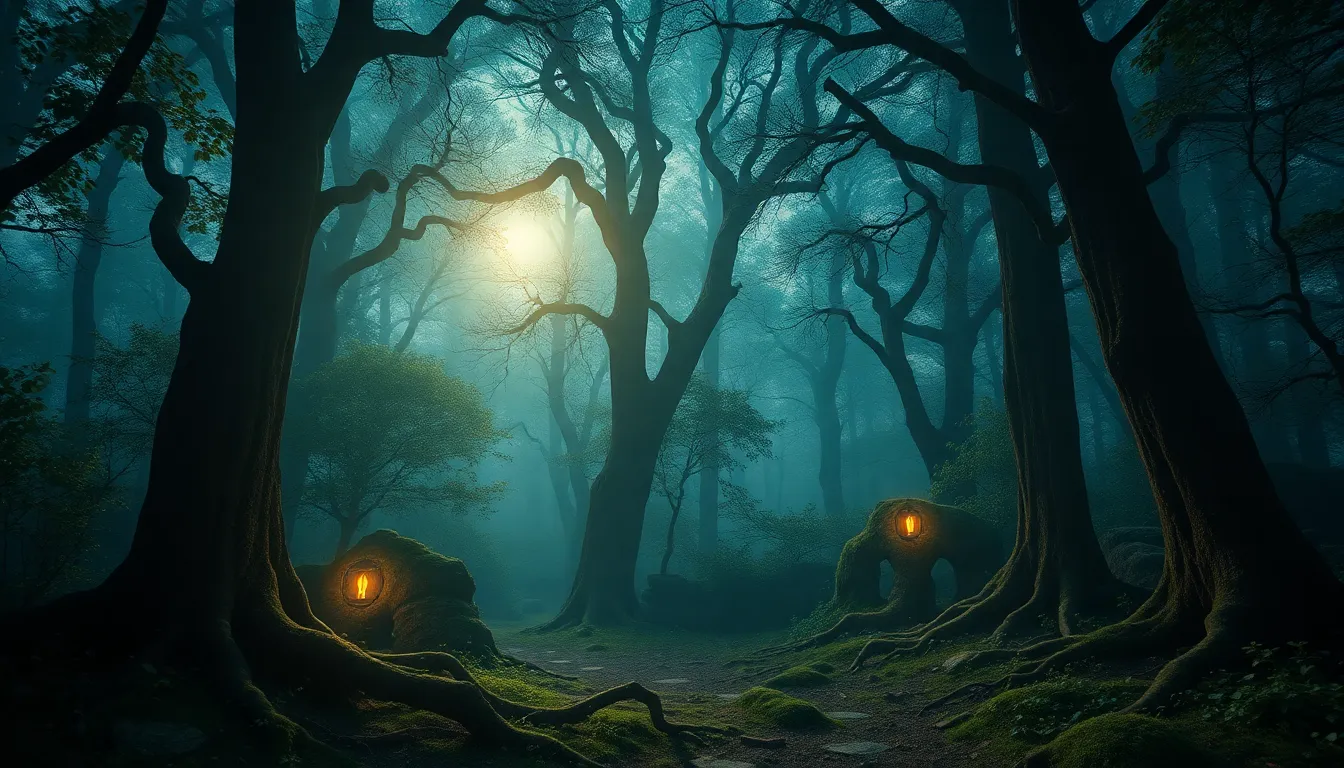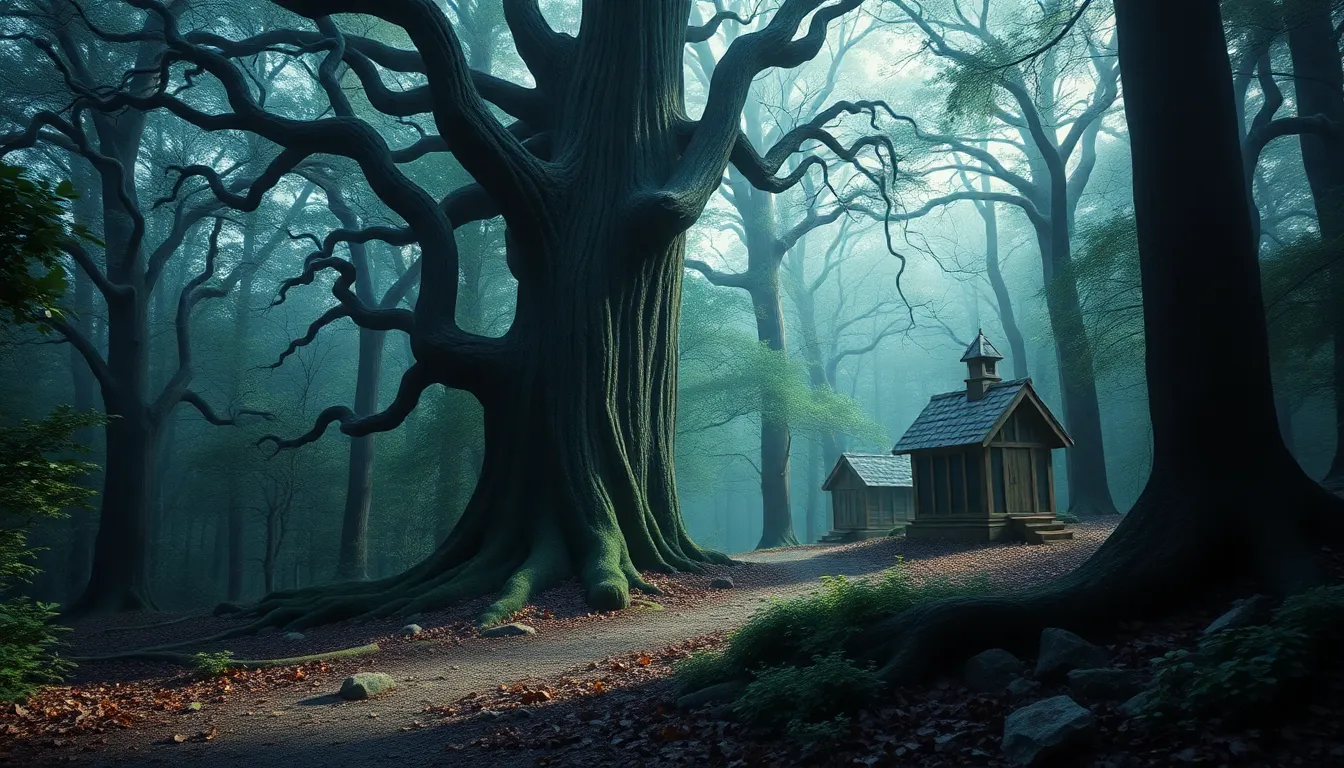The Enchanted Forest: A Journey Through Time and Myth
I. Introduction to the Enchanted Forest
The concept of enchanted forests has long captivated human imagination, serving as a rich tapestry woven with threads of myth, folklore, and history. Enchanted forests are often depicted as magical realms where the rules of reality bend, and extraordinary beings thrive. These mystical woods hold significant cultural value across various civilizations, often symbolizing the intersection between the known and the unknown.
This article aims to delve into the enchanting world of these forests, exploring how they are rooted in history and mythology. Through this journey, we will uncover the themes of transformation, danger, and beauty that these forests represent, as well as their enduring impact on literature, art, and modern storytelling.
II. Historical Origins of Enchanted Forests
A. Ancient civilizations and their sacred woods
Throughout history, forests have played a crucial role in the lives of ancient civilizations. They were not only sources of sustenance but also spaces imbued with spiritual significance.
- The role of forests in early human culture: Early humans revered forests as sacred spaces where they could connect with the divine. These woods provided not just physical resources but also a sense of mystery and wonder.
- Myths from Mesopotamia, Greece, and beyond: From the sacred groves of Mesopotamia to the mythological forests of ancient Greece, these landscapes were often seen as homes to gods, spirits, and mythical creatures.
B. The evolution of the enchanted forest concept through the ages
As societies evolved, so did their interpretations of enchanted forests. In medieval Europe, these woods became settings for fairy tales and legends, often serving as backdrops for quests and adventures. The concept of the enchanted forest continued to transform, reflecting the cultural and philosophical shifts of the time.
III. The Role of Folklore and Mythology
A. Common mythical creatures and figures associated with enchanted forests
Enchanted forests are populated by a diverse array of mythical beings, each embodying different aspects of nature and humanity.
- Fairies, elves, and forest spirits: These ethereal entities are often depicted as guardians of the forest, possessing magical powers and a deep connection to nature.
- Mythical beasts and guardians of the woods: Creatures like unicorns, centaurs, and dragons often inhabit these enchanted realms, representing both wonder and danger.
B. The moral and societal lessons conveyed through these myths
Myths associated with enchanted forests often carry moral lessons, reflecting societal values and fears. They teach us about the consequences of human actions, the balance of nature, and the importance of respecting the unknown.
IV. Iconic Enchanted Forests Around the World
A. The Black Forest of Germany: Legends and lore
The Black Forest is steeped in folklore, known for its dark, dense woodlands and tales of witches, werewolves, and mysterious spirits. This forest has inspired countless stories, illustrating the duality of beauty and danger inherent in enchanted spaces.
B. Sherwood Forest: The tales of Robin Hood
Sherwood Forest, famous as the legendary home of Robin Hood, embodies themes of social justice and rebellion. Its vast, green expanse serves as a backdrop for adventure and camaraderie, highlighting the forest’s role in human storytelling.
C. Japan’s Aokigahara: Myths of spirits and nature
Aokigahara, also known as the Sea of Trees, is a hauntingly beautiful forest at the base of Mount Fuji. It is rich with folklore, including tales of yūrei (ghosts) and spirits, weaving a narrative that speaks to both the beauty and darkness of nature.
V. The Symbolism of the Enchanted Forest
A. Representations of the unknown and the subconscious
Enchanted forests often symbolize the unknown, representing the subconscious mind’s depths. They are places where characters confront their fears, desires, and inner conflicts.
B. The duality of beauty and danger in forest settings
The beauty of an enchanted forest can be enchanting, yet it often hides dangers. This duality serves as a metaphor for life’s complexities, reminding us that beauty can coexist with peril.
C. Cultural interpretations of forests as places of transformation
Across cultures, enchanted forests are seen as transformative spaces. They are often where characters embark on significant journeys, leading to personal growth and enlightenment.
VI. Enchanted Forests in Literature and Art
A. Classic literary works featuring enchanted forests
- “A Midsummer Night’s Dream” by William Shakespeare: This play weaves magical elements into its narrative, showcasing the transformative power of love and the enchantment of the forest.
- “The Chronicles of Narnia” by C.S. Lewis: The woods of Narnia are filled with magic and adventure, illustrating the allure of enchanted spaces.
B. The influence of enchanted forests in visual arts
Enchanted forests have also inspired countless artists, symbolizing mystery and beauty in various forms of visual art. From romantic landscapes to surreal interpretations, these forests continue to captivate the creative imagination.
VII. Modern Interpretations and Adaptations
A. Enchanted forests in contemporary films and media
In today’s media, enchanted forests are often depicted as magical realms in fantasy films and series. They serve as essential backdrops for stories of adventure and self-discovery.
B. How modern storytelling reinvents traditional myths
Modern adaptations often reimagine traditional myths, blending classic elements with contemporary themes. This evolution keeps the enchantment alive while making it relevant for new generations.
C. The rise of fantasy genres and their connection to enchanted forests
The popularity of fantasy genres has led to a resurgence of enchanted forests in literature and film, reflecting a collective yearning for magic and wonder in our increasingly rational world.
VIII. Ecological Importance of Real Forests
A. The parallels between myth and the real-world ecological significance
Just as enchanted forests hold mythical importance, real forests are vital to our ecosystem. They provide habitats, regulate climate, and contribute to biodiversity.
B. Preservation efforts and the myth of the enchanted forest
The myth of the enchanted forest encourages preservation efforts, reminding us of the need to protect these vital ecosystems from destruction and degradation.
C. Lessons from mythology for modern conservation
Mythological narratives often emphasize the importance of harmony with nature. These lessons can inspire contemporary conservation efforts, advocating for sustainable practices and respect for natural environments.
IX. Personal Journeys and Experiences in Enchanted Forests
A. Anecdotes of individuals who have explored these mystical places
Many individuals share profound experiences in enchanted forests, recounting feelings of wonder, fear, and transformation. These personal stories reflect the powerful connection humans have with nature and the mystical allure of these magical realms.
In conclusion, the enchanted forest is more than just a setting for tales; it is a complex symbol that intertwines history, mythology, and personal journeys. As we explore these mystical woods, we uncover layers of meaning that resonate with our own experiences and cultural narratives, reminding us of the enchantment that still exists in the world around us.



